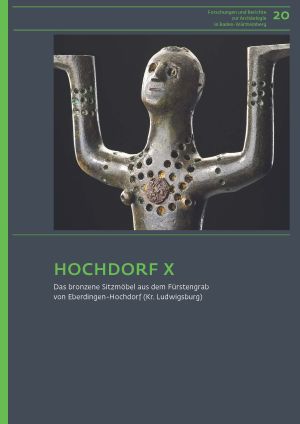Schwab, Roland
Byzantinische Goldschmiedearbeiten im Römisch-Germanischen Zentralmuseum
The Römisch-Germanisches Zentralmuseum in Mainz owns a collection of Byzantine goldsmith's work, only a small part of which has been published so far and is therefore widely unknown. Since this collection of jewellery and insignia of rank contains not only individual finds but also remarkable ensembles and, in addition, some copies of valuable, unfortunately destroyed originals, it is now being made accessible to the general public for the first time. The objects are listed in 49 catalogue numbers. They come predominantly from the core areas of the Byzantine Empire, but also occasionally from regions beyond its borders and, moreover, from a long period of time stretching from the late 5th to the 14th/15th century.
Particularly noteworthy are two treasure finds, among them even a coin-dated one from Asia Minor or the Syro-Palestinian region, several necklaces made of elaborately openwork gold medallions, a gold bracelet ring from Syria also decorated with the finest opus interrasile and moreover with the most valuable precious stones, the only surviving decorative strip of a woman's crown cap, the richly chiselled pocket lid of a man of presumably royal rank, and an ensemble of Roman glass vessels, probably made in Constantinople in the 8th/9th century. They could be antiques from the imperial palace there.
In addition to a short catalogue with concise information on each object in the collection, the book contains an antiquarian appreciation of these goldsmith's works and the numismatic treatment of the coin-dated treasure find. In addition, one finds a detailed description of all applied goldsmithing techniques, which two experienced goldsmiths and restorers examined in the RGZM workshops. Overall, the catalogue is much more richly illustrated than comparable publications with new master photos of all the precious objects and countless detailed photos as well as drawings.
Hochdorf X: Das bronzene Sitzmöbel aus dem Fürstengrab von Eberdingen-Hochdorf (Kr. Ludwigsburg)
More than four decades after its excavation, the presentation of the sitting bench, used in its last function as a funeral rest, completes the basic publications on the inventory of the Late Hallstatt period (c. 530 BC) chamber tomb of Hochdorf. The centrepiece of the volume is a catalogue of the overall appearance of this unique piece of furniture, which is based on digital imaging techniques. This is complemented by descriptions of the findings, the recovery, the restoration and production techniques, which close with the presentation of a replica of the piece. Detailed textile archaeological analyses of the rich adhesions on the funerary couch complement the picture. A further focus is on archaeometallurgical examinations of the furniture’s components and its iron substructure. Questions related to the origin of the object are discussed in a cultural-historical study on its southern and italic connections and on the interpretation of the pictorial programme. The volume is completed by bioarchaeological analyses of the deceased from the central grave as well as other burials from the mound area.








